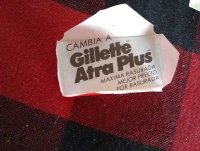Why did so many people abandon their double edge razors so quickly beginning in 1970-71?
I know this occurred in the U.S. because I was there. Gillette had a near monopoly on razors and blades in the U.S. up until then. I never even finished my blue steel pack of Gillette blades before stowing away my Slim forever in 1970. Before long, it was increasingly difficult to find a good selection of double edge blades in stores; now it is almost impossible.
I would be surprised if more than one in one thousand Americans shave with a double edge razor today. Did the double edge shaving apocalypse happen as quickly and thoroughly in other countries? Why?
Why, exactly, did men stop using Gillette DE razors and blades so quickly and thoroughly in the early 1970s?
I know this occurred in the U.S. because I was there. Gillette had a near monopoly on razors and blades in the U.S. up until then. I never even finished my blue steel pack of Gillette blades before stowing away my Slim forever in 1970. Before long, it was increasingly difficult to find a good selection of double edge blades in stores; now it is almost impossible.
I would be surprised if more than one in one thousand Americans shave with a double edge razor today. Did the double edge shaving apocalypse happen as quickly and thoroughly in other countries? Why?
Why, exactly, did men stop using Gillette DE razors and blades so quickly and thoroughly in the early 1970s?
Last edited:






